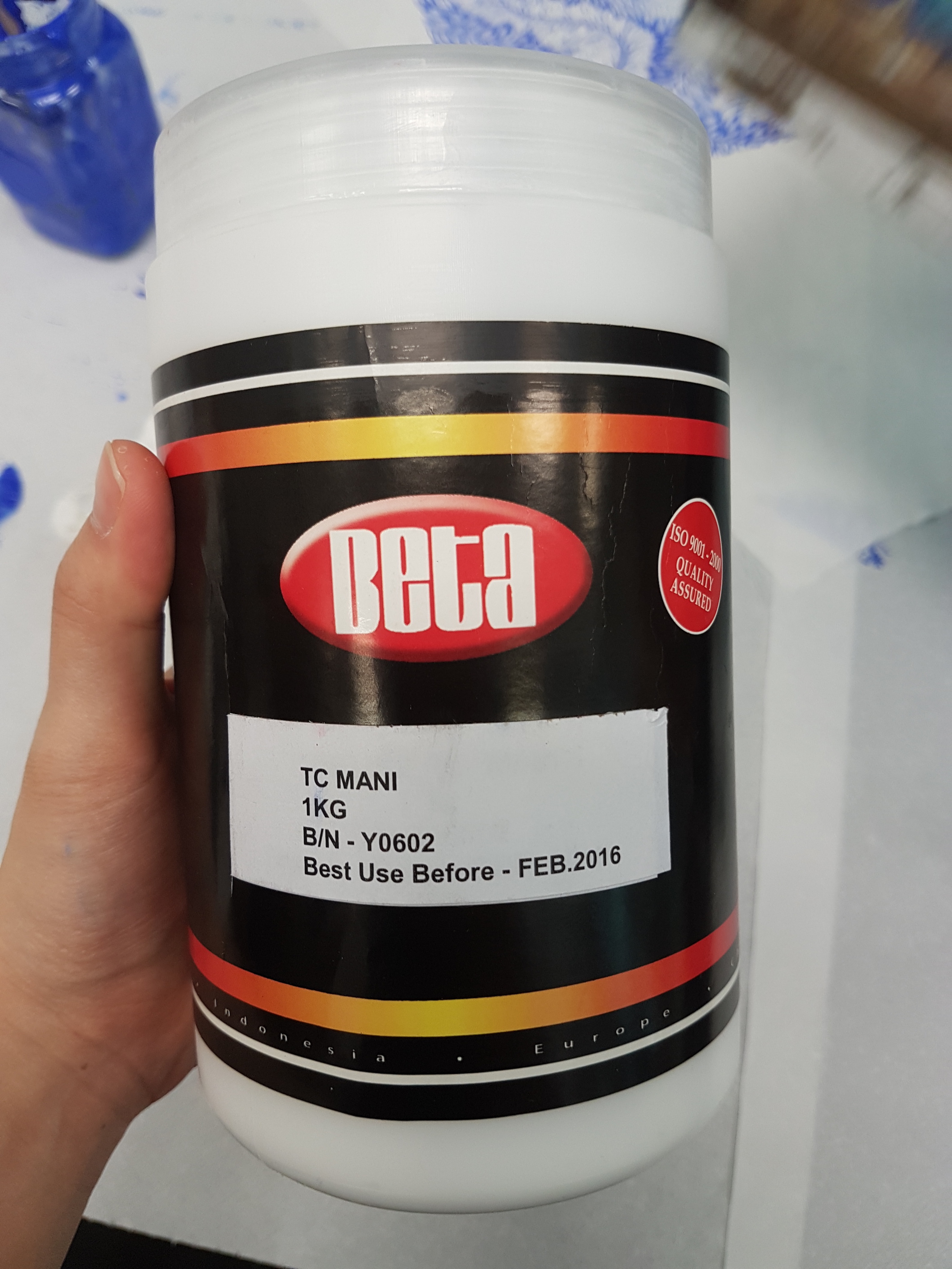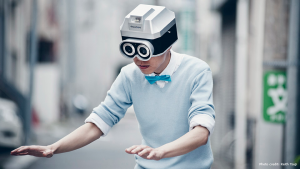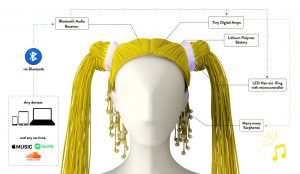This week, we learnt to print with thermochromic inks!
Developed in the 1970s, thermochromic inks have numerous applications and can be found in everyday items, art and design:
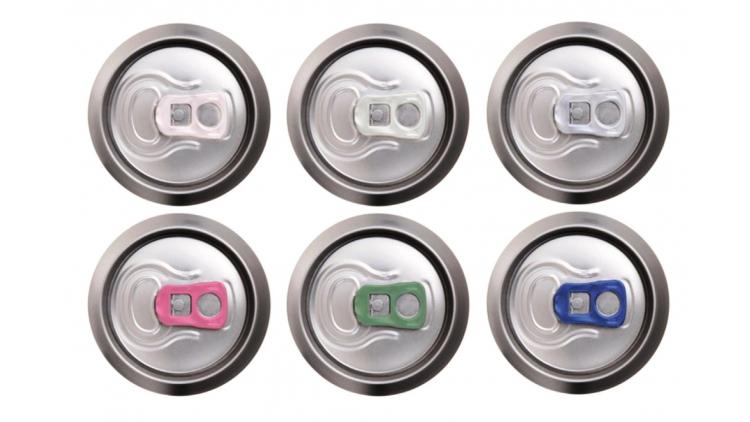

Materials needed
- Silkscreen and squeegee
- Light-coloured fabric to print on (A different type of ink is needed to print on dark fabrics)
- Thermochromic pigment (powder form)
- Acrylic medium and paint (optional)
- Heat source e.g. hair dryer or iron
Process
Mix the thermochromic pigment with the medium. Caution: wear masks while doing this as inhaling the fine powder can be harmful!

Mix well to achieve a paint-like consistency.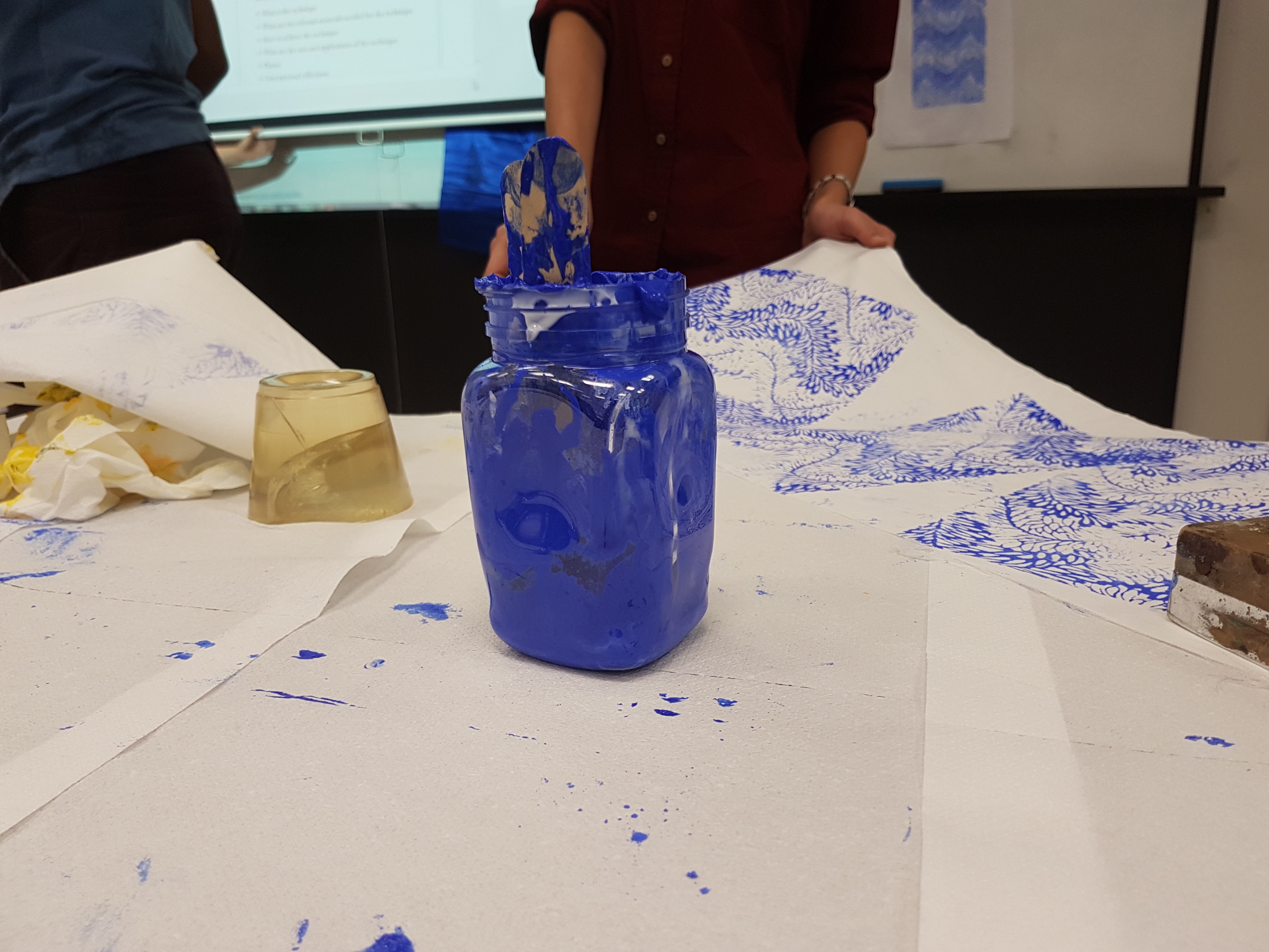
The printing process is similar to the basic silkscreen printing process. Put some ink along the top of the silk screen.

Drag the squeegee downwards, applying pressure evenly. Move the squeegee up and down several times to ensure even coverage.
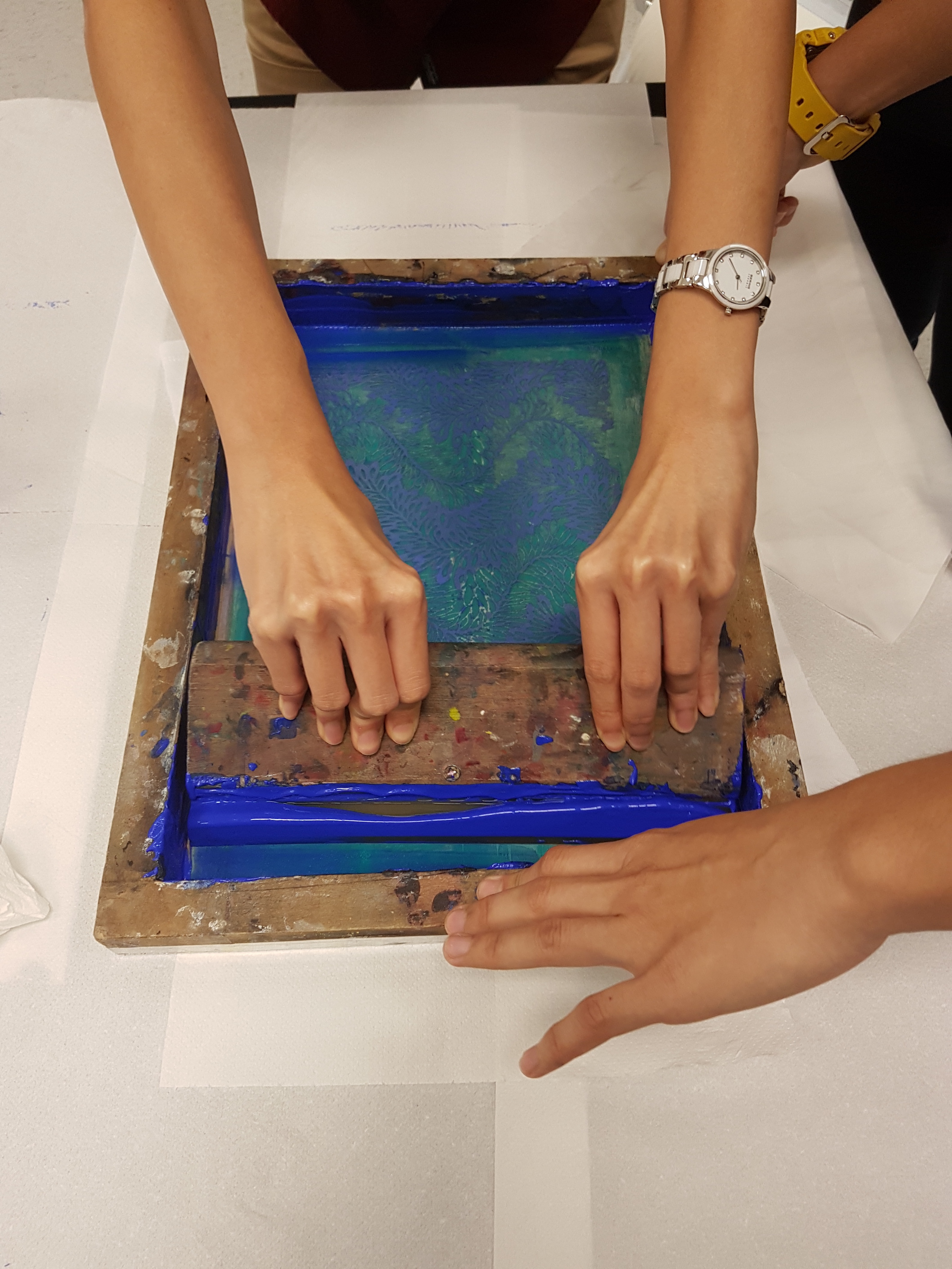
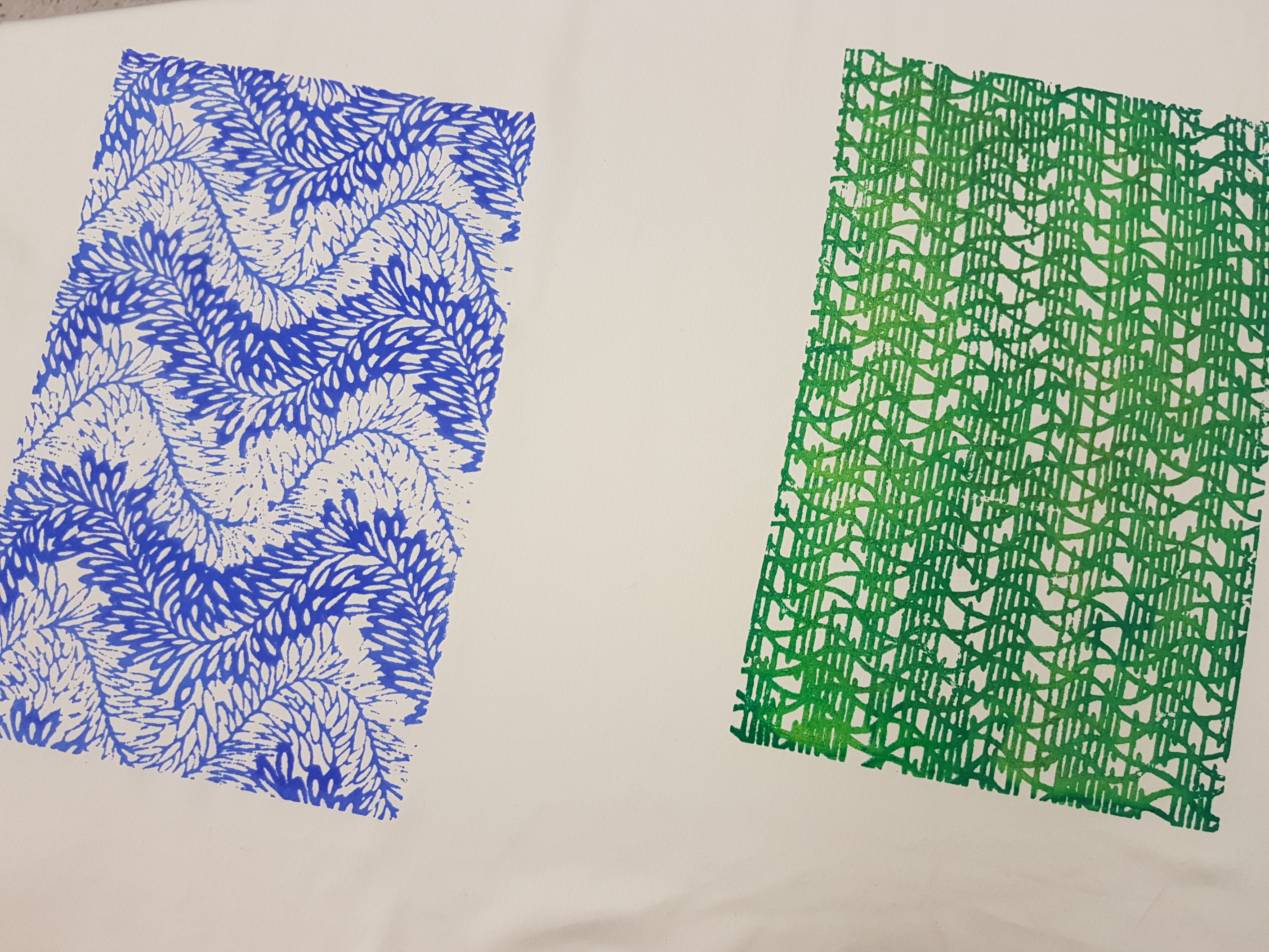
Unexpected Results
When I initially printed them, the inks were very bright and saturated. Strangely, when I brought my prints home later that day, I discovered that the colours (especially the blue) had faded substantially to a light pastel blue. I suspect this may be due to the type of fabric I used.
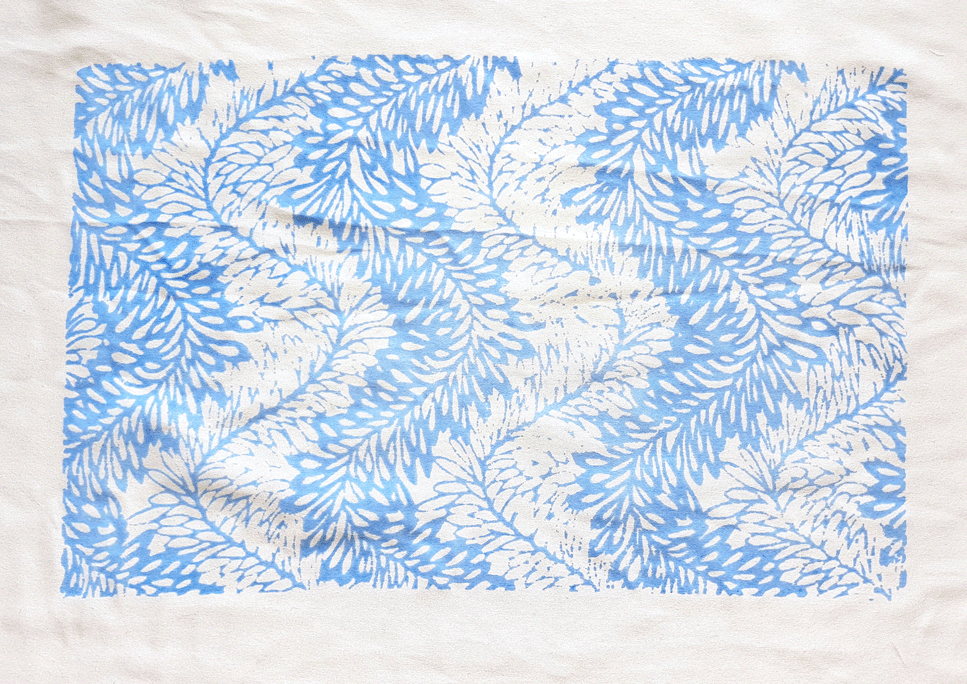
I printed another sample with yellow thermochromic pigment mixed with green acrylic paint. When heat is applied, the yellow disappears, leaving a cooler and darker shade of green.

‘The Original Wearable-Tech’
I like how fabrics with thermochromic ink are highly interactive. We can consider them to be the predecessor of wearable technology which is becoming increasingly popular. Instead of including electrical components such as LEDs and temperature sensors which add to the bulk of the clothing, fabric printed with thermochromic inks are lightweight and create a more seamless interaction. They are playful and can create surprising effects, reacting to human touch as well as the environment.

